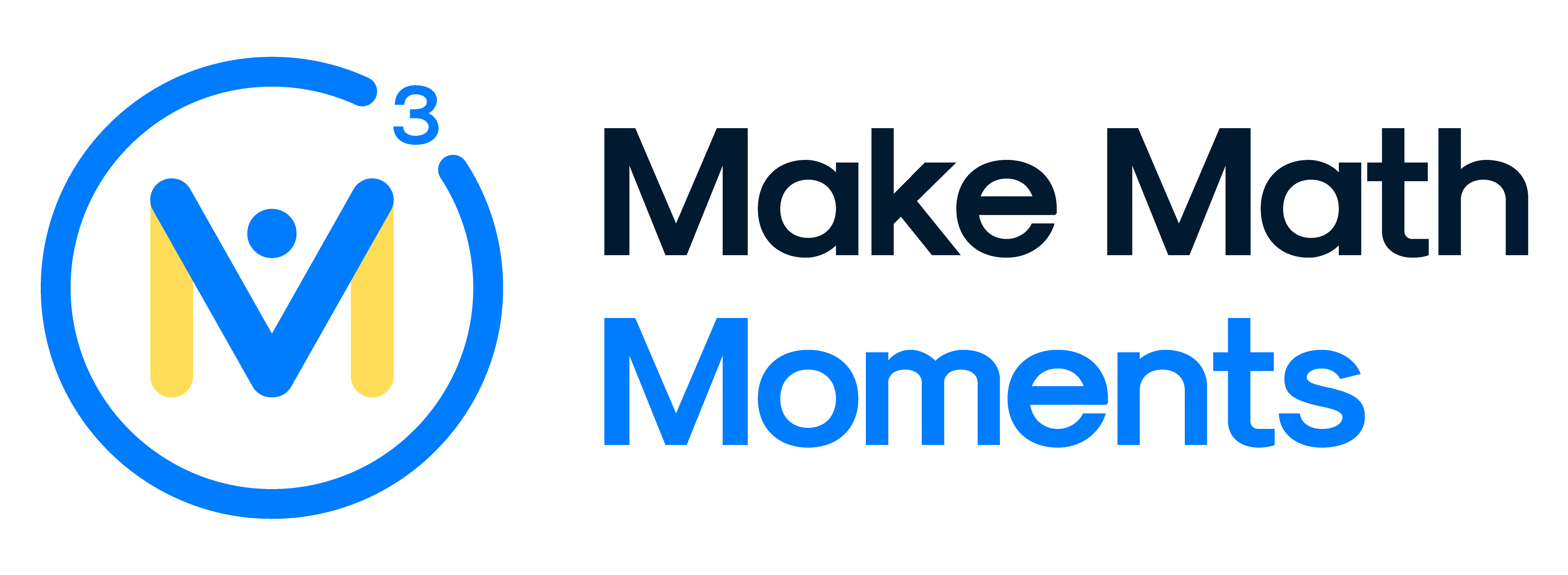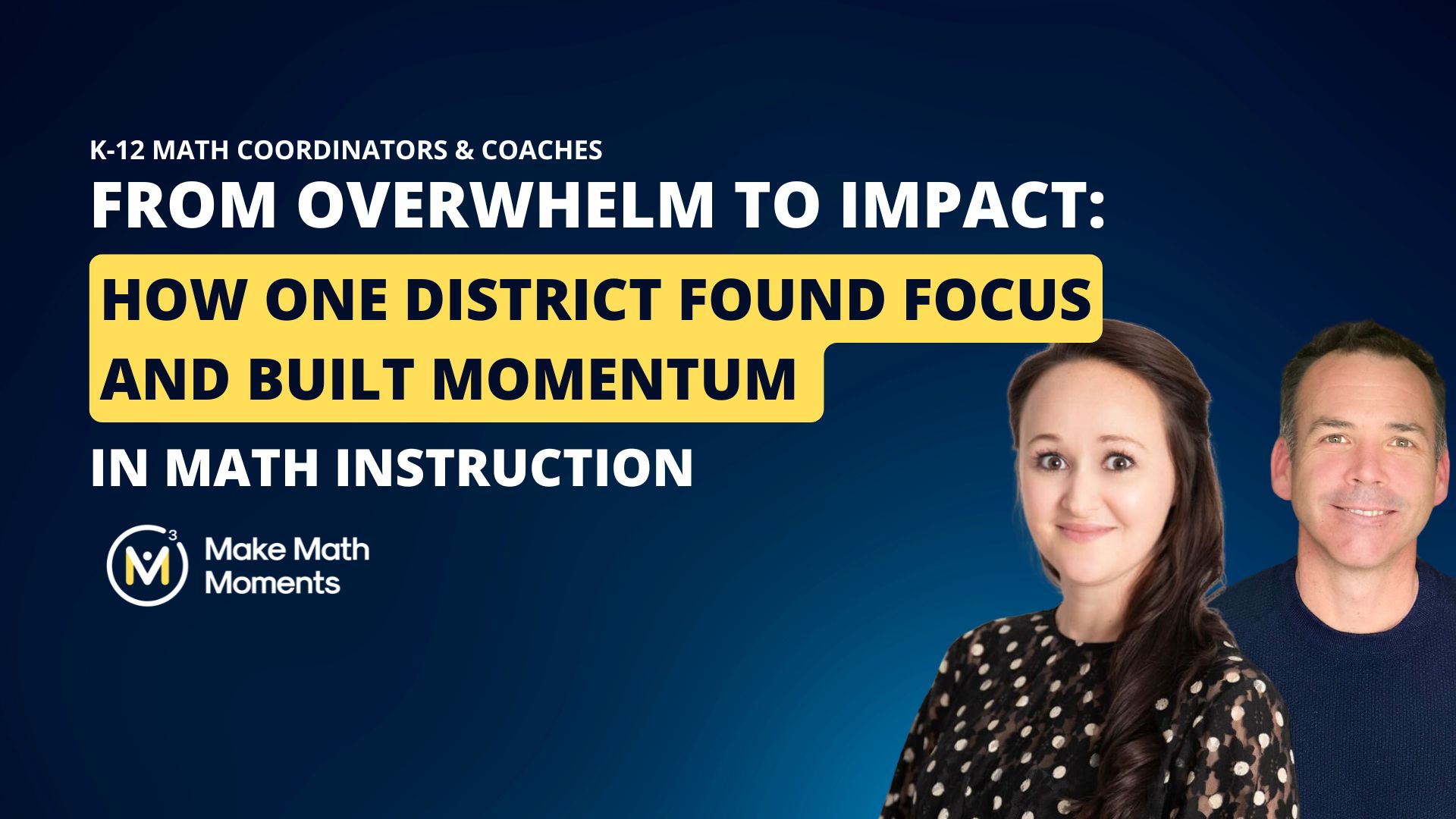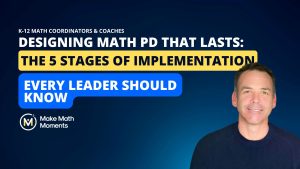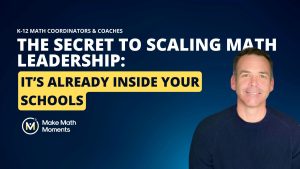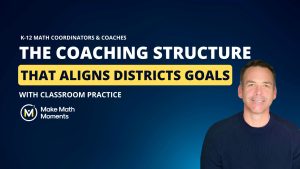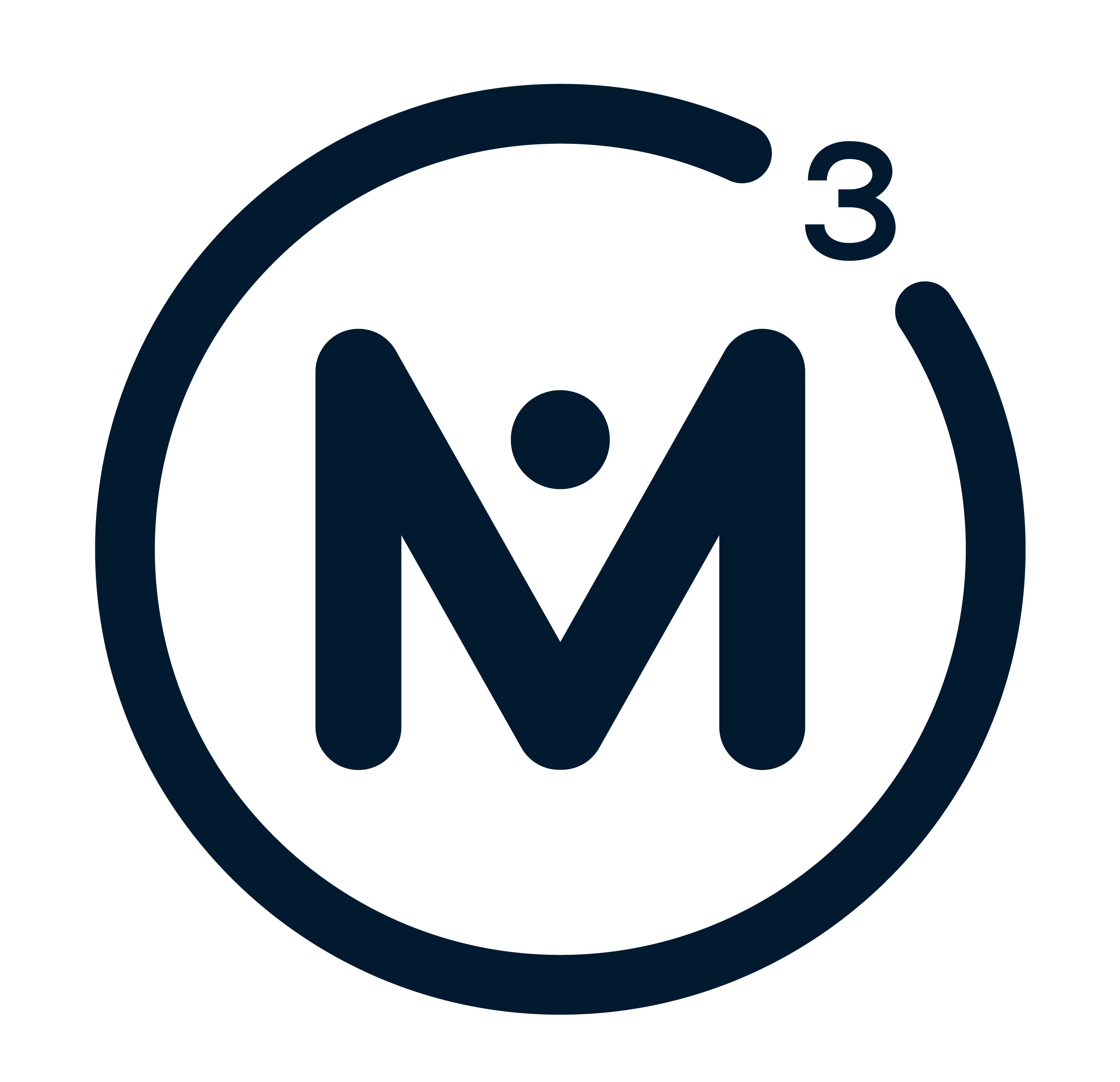At first glance, Riverside United School District looks like many others—ambitious, dedicated, and stretched thin. With a forward-thinking leadership team, a central office filled with passionate leaders, and a long list of priorities across departments, Riverside isn’t lacking vision.
But just a year ago, despite all the right intentions and a lot of hard work, their math team was feeling burned out. They had done everything—but couldn’t see the change they had hoped for.
Now, they’ve made a critical shift.
The Riverside math team is no longer just busy—they’re moving forward with focus. Their coaches are working with purpose. Teachers are being supported with intention. And instead of feeling like they’re spinning plates, the district has built a plan that will finally transform effort into traction.
So what changed?
It wasn’t a new program or a bigger budget. It was a shift in strategy—grounded in clarity, supported by a sustainable system, and driven by the core ideas we highlight in our book on building effective math improvement plans.
Let’s break down what they did—and what you can learn from their journey.
The Starting Point: Ambition Without Focus
When we first began working with Riverside, the district had clearly articulated math goals:
- Improve opportunities and quality of mathematical discourse
- Strengthen computational fluency
- Support access to rich, grade-level tasks
They had built out a walkthrough tool to support these goals. Coaches were providing feedback aligned to discourse practices. Voluntary PD sessions were offered around fluency. New digital platforms were introduced to support specific skill areas.
By all traditional measures, the district was doing “everything right.”
But by the end of the year, the team was exhausted. Despite the aligned structures and a dedicated coaching team, they weren’t seeing the widespread classroom impact they had envisioned.
The goals were strong—but they were too broad. And with only two central office math leads (one of whom wore multiple hats), it became clear that doing everything was spreading everyone too thin.
The Turning Point: Choosing a Focus That Matters
In our support program, we stress the importance of clarity—not just about what you want to improve, but how you’ll do it and how you’ll know it’s working. That’s where Riverside made a bold, strategic pivot.
We asked:
“If you could make one critical change this year, what would it be?”
They chose discourse.
Why discourse?
Two reasons:
- Their walkthrough data showed a persistent over-reliance on teacher talk, with limited opportunities for students to process, discuss, and reason aloud.
- Discourse was already a district-wide board priority—not just in math, but across subject areas. Aligning their math work with broader system goals meant they could ride the wave of support, messaging, and training already happening in other departments.
Narrowing to one priority didn’t make the team less ambitious—it made them more strategic.
Getting Specific: Turning Vision Into Action
With discourse as the priority, we helped the Riverside team ask the next question:
“What’s a measurable change we could achieve in the next 4–5 months?”
The answer:
Implement five consistent, high-leverage talk routines across grades 3–6.
This became their first short-term milestone. They defined what progress would look like by February:
- Teachers would begin to consistently use specific, structured talk moves and sentence stems.
- Coaches would model, co-plan, and provide feedback around these routines.
- Support would include cross-departmental collaboration with ELA and special education leaders.
- Observable use of these routines would serve as initial evidence of implementation.
This isn’t about abandoning fluency or problem solving—it’s about choosing the entry point that is most actionable, aligned, and likely to build momentum.
Planning for Sustainability: The Four Stages in Action
The Riverside plan aligns beautifully with what we call the Four Stages of Adoption, which form the foundation of any sustainable math improvement effort:
| Stage | What Riverside Did |
|---|---|
| 1. Align to a Shared Vision | Chose discourse as the central priority—already shared by the district as a whole. |
| 2. Provide Experience & Observation | Embedded talk routines into coaching, modelling, and face-to-face PD. |
| 3. Build Belief & Efficacy | Gave teachers support, choice, and clear rationale for change (modelling helps build belief). |
| 4. Offer Ongoing Support | Focused coaching on 3–6 classrooms, with planned, repeated support cycles (coaches are not stretched thin). |
Critically, they limited their focus to grades 3–6. Why?
Because you can’t support every grade and every goal at once—especially in a large district with limited capacity.
We often say in our work: go narrow to go deep—and Riverside leaned in fully.
Why This Approach Has Promise
Research tells us that 30 to 100 hours of sustained PD is often required to see real instructional change. One-off workshops won’t cut it. Even great ideas fizzle without sustained follow-up.
That’s why coaching—especially when targeted and embedded—is so powerful.
In Riverside, coaches are no longer trying to do everything for everyone. Instead, they have a clear goal, a specific audience, and a system for support and measurement. The foundation is in place for measurable change to take root over the coming months.
Teachers aren’t being overwhelmed by new initiatives—they’re being supported in learning practices they can actually implement.
And perhaps most important: by investing deeply in one group of teachers, Riverside is building internal capacity. The grade 3–6 teachers aren’t just participants—they’re being positioned as informal leaders, who can support colleagues in future phases of the work.
Lessons for Math Leaders Everywhere
Riverside’s story is a powerful reminder that success doesn’t come from doing more—it comes from doing the right work deeply and consistently.
If you’re leading a district or school math improvement effort, here are five key takeaways:
- Clarity beats complexity. Choose one critical goal. Define success. Build a plan around it.
- Don’t fear going narrow. Supporting a small group well is better than touching everyone superficially.
- Embed support. Coaching is where professional learning comes to life—not the PD day.
- Measure what matters. Define short-term milestones and collect evidence to track progress.
- Leverage what’s already working. Align with broader district initiatives to increase coherence and support.
Final Thought: This Is What Sustainability Looks Like
Riverside isn’t declaring victory yet—but they’ve made a powerful shift toward sustainable improvement. By focusing on discourse—and doing so with intention, structure, and support—they’ve set themselves up for meaningful progress and long-term change.
In our program, we say that math improvement doesn’t happen in leaps—it happens in layers. Riverside is laying one of those foundational layers this year. And if their focus holds, the ripple effects could reshape math instruction far beyond a single school year.
Want to learn how to apply this model in your own district? Book a call and let’s explore what sustainable math improvement could look like for you.
